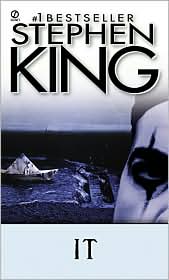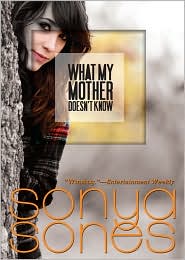
King, Stephen. IT. New York: Signet, 1987.
Annotation: In a small town in Maine, seven young outcasts band together to form 'The Losers Club." When children start being found mutilated and murdered, each of the group's greatest fears come to life and start terrorizing them, appearing most often as Pennywise the clown. It will take all of their courage and conviction for discover the truth about "IT."
Reason for Rejection: As perhaps the most commercially successful author of the past half century, Stephen King is no stranger to stories involving teens and groaning up. But It is one of his few stories (or anyone else's for that matter) that so skillfully combines King's trademark horror, adult perspective, and a genuine coming of age story that feels at right home in the young adult genre. It's ashame that a novel so entertaining falls on it's face in the last quarter of the book, resorting to a random assortment of supernatural deus ex machina to wrap up the plot.
A great strength of the storytelling is that there is no single protagonist, though King's quasi-autobiographical character Bill comes close. The story is told from the group's perspective, giving each of the seven teen's hope, fears and motivations a chance to develop. Teen readers will feel included in their quest, and most likely find comfort in their company as the book (and their lives) get darker.
The dueling time periods of the narrative structure is not only innovative, but it also has the added benefit of creating a link between the teen mind and their adult counterparts. For adult readers this may represent a nice reminder of how the experiences of our childhood impact our lives, but for the teen reader its a promise they all fears can be overcome and they too will one day get to be adults. Many of the developmental skills that teens need to grow up are on full display in both time periods, and King reminds readers that few people handle childhood trauma more honestly than he.
When the mystery of IT is still foggy in the first half of the book, it is impossible to stop turning the pages - frankly, Pennywise the clown is a truly terrifying villain. However, the story takes a turn toward the middle and starts to become this confusing mix of Native American shamanistic mysticism, ancient astrology, and pulp supernatural tomfoolery. Sadly, the story and the character's credibility unravel as the explanation of events turns to the unintelligible. The simple truth is that 3/4 of King book are perfectly paced, heartbreaking and enthralling - and the last quarter is pure middling.
Genre: Printz, Horror, Coming of Age, Supernatural

